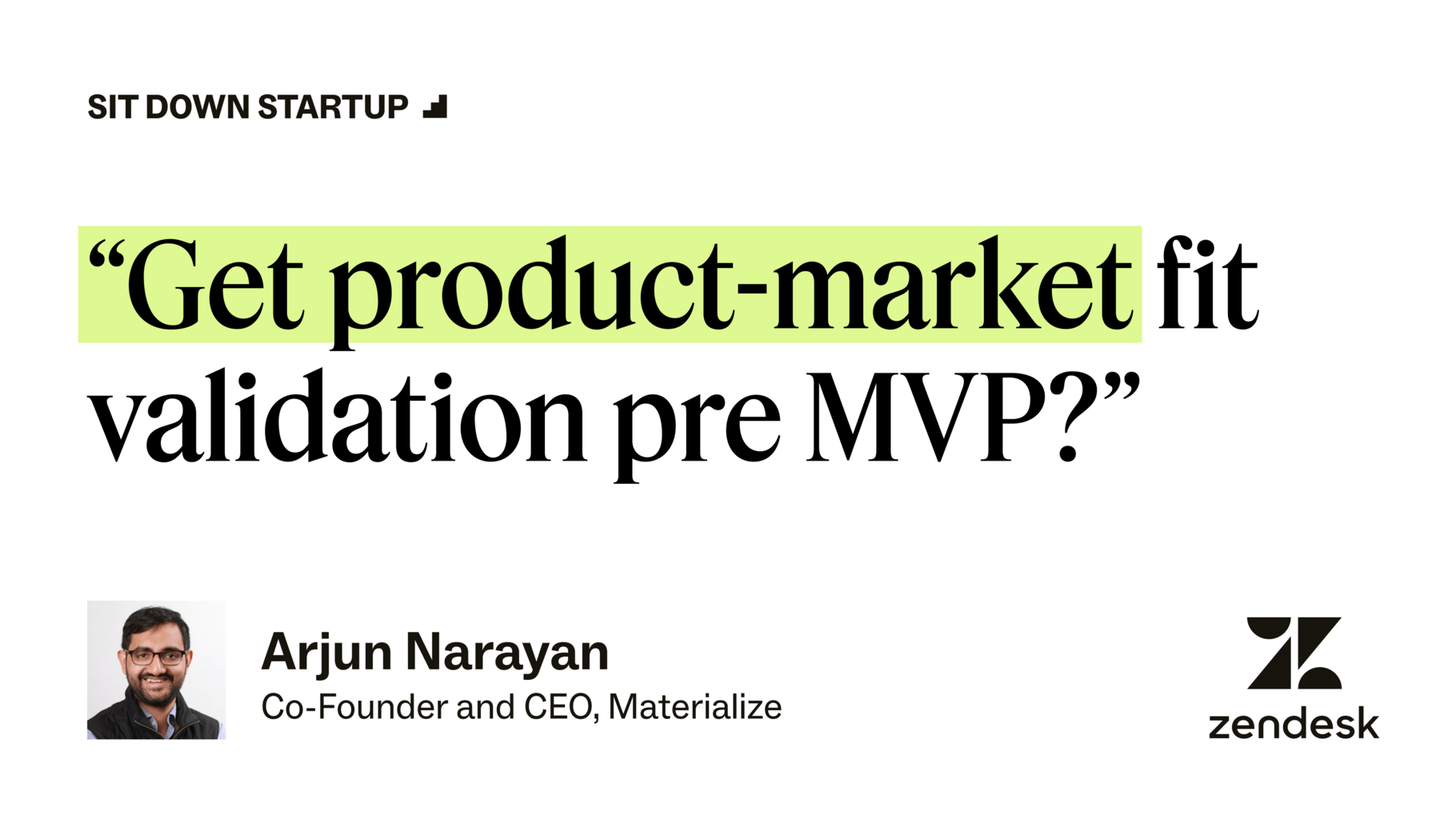Article • 4 min read
Unlocking growth: How to get product-market fit validation without an MVP
Materialize founder Arjun Narayan shares how he built a database startup and secured $100M+ strategic investment.
Por Adam O'Donnell, Host of the Sit Down Startup podcast
Última atualização em March 29, 2024
Sit Down Startup is back with Arjun Narayan, founder of Materialize. Host Adam O’Donnell dives into Narayan’s journey from India to raising over $100 million and revolutionizing real-time data processing with Materialize. Founders will appreciate the dialogue on tech database funding and the role of investor expertise. Tune in for more.
The journey from India
Narayan’s path to becoming a founder began when he was a kid. He shares, “I grew up in India, in Bangalore. I knew pretty early on that I wanted to move to the United States. It’s not an uncommon path for a lot of people across the world. It’s where the action is. It’s where you want to be.”
He had never been to America when he began applying for college in the United States. “I went to Williams College, which turned out to be in the middle of nowhere in Western Massachusetts. I thought, ‘Hang on a second—I have no idea what rural Massachusetts is!’ But it was a wonderful experience. It was the perfect place. If you want to end up in a random location in the United States, a small idyllic college town in New England is probably the best it’s ever going to be.”
After completing his undergrad, he felt he lacked the technical expertise to pursue his dream of starting a company. Instead, he decided to continue his education. He was inspired by the Google founders, who had commercialized insights into linear algebra and distributed computing that they had come across through their Ph.D. research. “I wanted to do something of that sort, which is how I ended up doing a Ph.D. myself,” he says. “I wanted to go very deep and, essentially, invent something.” Though he didn’t go on to invent something, he was eventually able to realize his entrepreneurial dream.
The idea that sparked Materialize
Narayan stayed in the United States to pursue his Ph.D. in distribution systems and databases. During his studies, Narayan came across some exciting research that he believed would revolutionize distributed computing. He met his now co-founder, Frank McSherry, who was doing cutting-edge work in distributed data processing and stream processing at Microsoft Research. “He had done a ton of innovations, that when stacked upon each other, really allowed for a step function change in what you could compute and the speed at which you could compute them,” Narayan says.
Narayan was also interested in distributed databases, especially those that were easy to use. He found Google Spanner—which was designed to make building global-scale applications easier for Google developers—particularly inspiring. He eventually began working for Cockroach Labs, an open-source clone of Google Spanner: “I was looking for startups that were in the mold of taking something very technically innovative but complex and commercializing that with intent.”
While he was working at Cockroach Labs, Narayan maintained his entrepreneurial aspirations. He was determined to launch a startup with McSherry, but McSherry wasn’t interested at first. Narayan recalls, “Initially, he was very skeptical, and then he was curious. I had to walk him through it. He was a classic academic, asking, ‘What is a company? What is a corporation? Why does it need to exist?’”
Over time, Narayan managed to convince McSherry, and Materialize was founded.
Finding investors with expertise
Narayan was cautious when it came time to fundraise for his company. “The first conversation I had with every VC that I talked to was, ‘This is going to take 100 million dollars pre-revenue in order to just afford the R&D required to build the database.’ We very deliberately restricted the set of investors to investors who had invested in databases before.”
He felt this was particularly important given the recent success of Snowflake’s IPO. Narayan explains, “Everyone wanted to invest in databases. There was a lot more of what I call ‘tourist money.’ I was like, ‘No, you cannot talk to people who don’t know what they are signing up for.’”
While other founders may be ecstatic to speak with any VC, Narayan was confident in his decision to limit potential investors in the early days of Materialize. He knew that if he found investors with the right expertise, Materialize could become the kind of company that appealed to all investors.
He explains, “Investment and fundraising is a journey to being the kind of business that is robust and makes sense to someone who doesn’t understand the technology. In the very earliest days, that’s not true at all. You need people who deeply understand the value of the technology, the specific insertion, the path, and the reasons why someone would choose your technology. Over time, you can get less and less sophisticated as you grow toward being a public company.”
